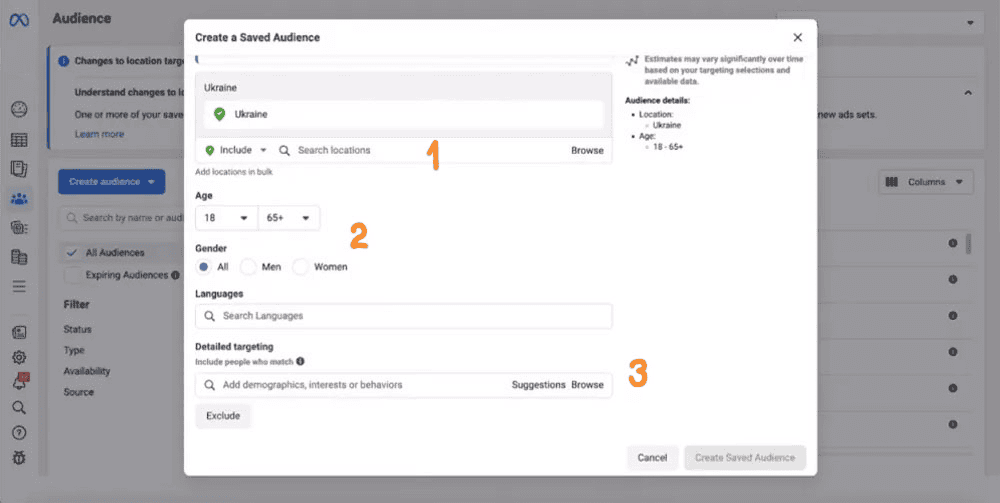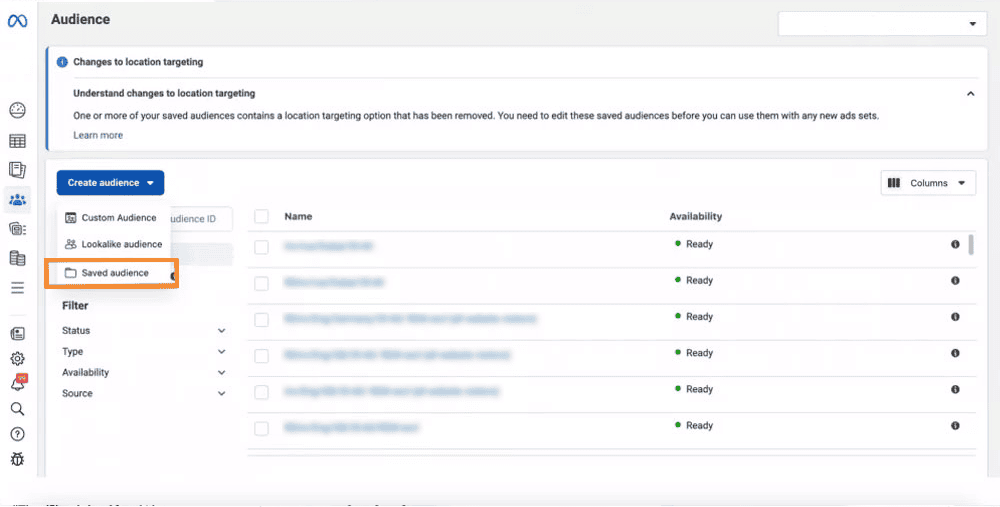Improve the effectiveness of your advertising campaigns by using advanced audience targeting settings on Facebook
Creating a quality ad does not in itself guarantee a successful campaign. To achieve the desired results, it is important for advertisers to target their ads precisely to their audience. In this context, Facebook's advanced audience targeting is a key tool for optimising the effectiveness of advertising campaigns.
Here is a detailed overview of advanced audience settings, their impact on improving campaign performance and how they can help you achieve better results.
Overview
Facebook Ads offer flexible targeting options, with advanced audience settings playing a key role. Let's take a look at what advanced options are available and how they impact campaign results.
Advanced Audiences allow advertisers to target their ads with a high degree of precision. Instead of a broad audience, they can select specific characteristics that match the characteristics of potential customers.
In this way, the data Facebook collects about its users becomes a tool for identifying the ideal customer.
Meta Advertising Account
Facebook Ads offers a wide range of options for setting up your audience, one of the most important of which is detailed targeting. It allows you to precisely define your audience based on a variety of factors:
- Demographics: Includes user age, gender, location, education level, occupation, marital status.
- User interests: Based on users' hobbies and activities, such as sports they play, travel, business interests, having children, etc.
- Behavioural factors: Includes preferences in choosing a browser to browse Facebook, using new gadgets, etc.
Facebook collects this data based on users' activity on the social network - subscriptions, events attended, interactions with content. For example, taking into account upcoming anniversaries or special events in a user's life can be an additional strategy for effective targeting.


In the Facebook Ads Dashboard, you can not only add interests, but also exclude them, which greatly increases the accuracy of targeting. This means advertisers can tell the platform which audiences should not see their ads. This approach avoids the cost of showing ads to users who are unlikely to be interested in a product or service.
In addition, Meta offers the ability to further narrow the audience by requiring multiple conditions to be met simultaneously. This means that ads can be configured to only be shown to users who meet several specific criteria at once, such as being of a certain age, having certain interests and living in a certain region.
These advanced audience settings allow advertisers to target their messages more precisely. Instead of showing ads to random users, they can focus exclusively on the audience most likely to be interested in their product or service. This approach allows much more efficient use of advertising budgets, reducing costs and increasing the likelihood of better results.
Creating and using
There are two main ways to create a new audience for a Facebook ad campaign: directly when setting up an ad campaign at the ad group level, or using the Audiences tool.

This tool allows you to create and save audiences with settings of your choice. To do this, first click on the 'Create Audience' option and then select 'Saved Audience' from the drop down list.
In the next step, you will be presented with a window to set up your audience. Here you will need to give your audience a name and set the following parameters:
- Select the desired geolocation.
- Specify the demographic characteristics.
- Identify interests or behavioural factors.
Facebook may also offer additional options to complement your choices. Once you have completed all the settings, click the 'Create Saved Audience' button and your custom audience will be saved.

This is useful if you need to create multiple audiences and then set up campaigns for them.
It is also possible to save the targeting parameters directly when creating a campaign. To do this, once you have completed the targeting settings, click on the 'Save Audience' button and select a suitable name for the audience.

It is important to note that when setting up advertising campaigns in certain areas, such as products and services related to credit, employment, housing, and advertising related to social issues (such as politics, economics, elections, etc.), some detailed targeting options may be limited or unavailable. This is due to the need to prevent discrimination and ensure compliance with relevant laws and ethical standards in advertising.
Benefits
To optimise the effectiveness of your advertising campaigns, experimenting with different combinations of granular targeting parameters can bring significant benefits:
-
Minimise ad wastage: Using specific combinations of parameters helps you focus on potential customers who are genuinely interested in your product or service. This reduces the risk of wasting your advertising budget on an audience that doesn't meet key criteria.
-
Increase conversions: Precisely targeting ads to a specific audience increases the chances of attracting more qualified leads and therefore increasing conversions. Because ads are shown to users who are already interested in similar products or services, they are more likely to result in a purchase or order.
-
Improve ad relevance: By creating combinations of parameters, you can develop more personalised advertising messages that meet the specific interests and needs of your audience. This increases the relevance of the ad and can lead to better interaction with potential customers.
Conclusion
-
Efficiency through granular targeting: Using different combinations of parameters on Facebook is key to the success of advertising campaigns. Proper targeting allows you to reach more potential customers, increasing the overall effectiveness of your advertising efforts.
-
Advertising optimisation through parameter combinations: Using granular targeting to create unique combinations of parameters can significantly reduce ad wastage, increase conversion and improve ad personalisation. This allows advertisers to focus on specific potential customers while optimising ad spend and increasing the impact of their ads.
-
The importance of testing advertising strategies: Regularly testing and adjusting combinations of granular targeting parameters is critical to improving campaign performance. This allows you to respond quickly to changing market conditions and adapt your advertising strategy to current trends and audience behaviour.



